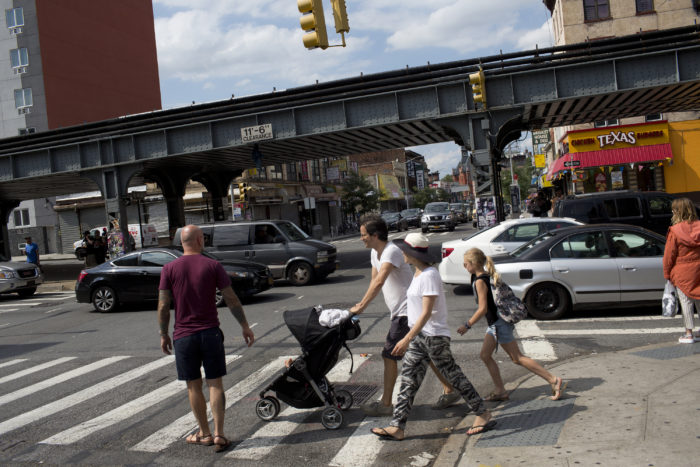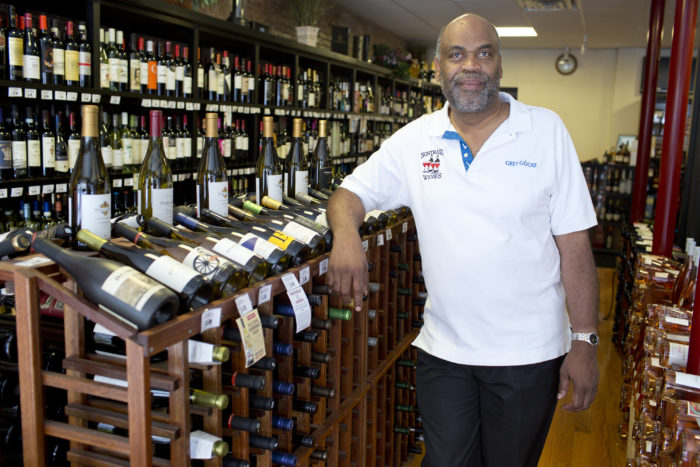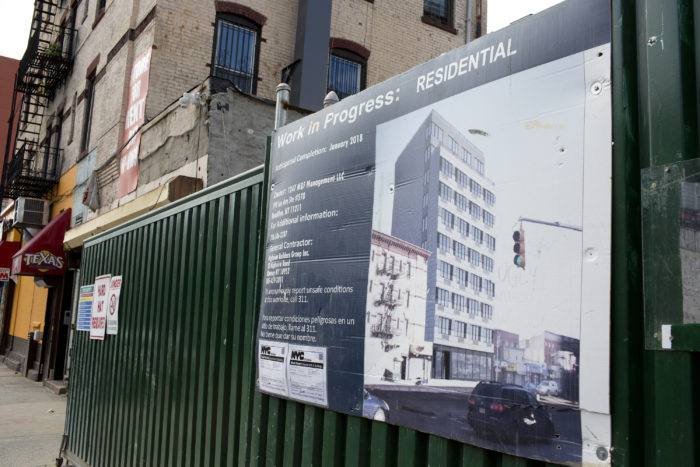Edmon Braithwaite remembers the struggle of finding ways to help businesses along Nostrand Avenue. The area was among the least desirable areas of Brooklyn to open a business.
As founder and chairman of the Bed-Stuy Gateway Business Improvement District, he spent many days negotiating with banks and trying to persuade city officials that the artery was worth focusing on. Most of those businesses, a majority of them minority-owned, had trouble securing loans, getting insurance and finding operating capital.
“We were under the delusion that funds would be made available to minority businesses, but it never materialized,” said Braithwaite, who owns Nostrand Avenue Wines and Liquors. Yet against the odds, many of those businesses survived. Now they face a very different challenge: Nostrand has been discovered.
The most notorious milestone came in recent days, with street protests in Crown Heights over the marketing campaign of a new restaurant, Summerhill, at 637 Nostrand Ave. The owner, a Canadian expat, had tried to establish some local cred by exploiting the neighborhood’s gritty past, including a brag that marks on the wall were bullet holes. The backlash was intense, fueled by the larger context of gentrifying newcomers marching deeper into Brooklyn.

The sure sign of a burgeoning population: stroller traffic at the intersection of Nostrand and Atlantic avenues
But the other half of the equation is the fate of the established business owners, largely West Indian and African-American, who wonder whether they can hang on through the changes.
For years, the strip had been dotted with smaller shops, restaurants, offices, groceries and storefront boutiques owned mainly by people who lived in the communities along the avenue. Always an important north-south artery, where several bus and train lines meet, it never lacked for foot traffic.
But more recently, the “Williamsburg effect” has spread south, bringing juice bars, organic markets, bakeries and other establishments that appeal to millennials who have the disposable income for such fare. By now, the pattern is familiar: Like Brooklyn thoroughfares including Broadway, Vanderbilt and DeKalb, the Nostrand corridor is moving upscale.
The turnaround has brought Nostrand a wave of dynamic and diverse new restaurants, including The Breukelen, Colina Cuervo and Two Saints–and even a luxury hotel, The Brooklyn, right around the corner. The new business promises to create jobs and bring revenue from outside the neighborhood.
However, small-business owners must now calibrate their business to a changing crowd and, even more painfully predictable, the rising rents.

Edmon Braithwaite, owner of Nostrand Avenue Wines and Liquors, recalls a day when it was hard to get bankers or city officials to focus on the business corridor as a growth prospect
Lindiwe Kamau, the president of the Nostrand Avenue Merchants Association, owns a storefront pottery business, Expression in Ceramics, that has been in business for 20 years. She doesn’t like to dwell on the word gentrification, but says the impact on rents is inescapable. Many of the old stewards of Nostrand can no longer afford to stay open. “Rents had been $1,500 for a storefront and landlords were even willing to rent for $1,000, but in the space of six years, that went to $4,500,” said Kamau. “You’re finding that the new merchants are people who have had businesses in other areas and they choose to buy property over here and totally gut a building. The building next to me took over a year to do everything from scratch, now there’s a bakery there.”
So what changed so rapidly? Braithwaite has an idea that nobody traveling up Atlantic Avenue could miss. “I call it the voodoo of the Barclays Center,” said Braithwaite. “The moment Barclay Center talk came, it became an excuse for property owners to immediately jack up their rents.”
But that’s not the only factor. New residential development has reached Nostrand, bringing the prospect of greater population density and higher retail demand. David Kramer, president of the Hudson Companies, a major developer, recalled at a recent Brooklyn real-state conference when he began taking notice of the corridor’s prospects. While closing a deal two years ago, a young summer legal associate mentioned to him that “Nostrand is the new Franklin,” referring to that nearby avenue’s renaissance. Kramer repeated that remark to his colleagues, which influenced Hudson’s decision to build the 170-unit, market-rate rental building at 310 Clarkson Ave., at the corner of Nostrand, which will start offering leases late this fall. That development led to a second phase next door at 350 Clarkson Ave., a 250-unit building scheduled to open in early 2019.
While Nostrand stretches from Williamsburg to Sheepshead Bay, the heaviest rush to develop has been along the heavily trafficked northern half, including Bed-Stuy, Crown Heights, Prospect-Lefferts Gardens and Flatbush.

The site of new residential apartments being built on Atlantic Avenue just off Nostrand
Braithwaite believes properties have been purchased by speculators and sat on, awaiting higher prices. “I believe there has been an orchestrated move by property owners to keep their places vacant for an extended period of time, possibly to demolish them and replace them with eight-story buildings,” said Braithwaite, who bought the building where his business operates. “It seems like more of a calculated move by developers to keep them empty so they have no problems with moving people out.”
Medina Sadiq, interim executive director of the Bed-Stuy Gateway BID, is concerned that the trend toward outside businesses could lead to the creeping Manhattanization that has transformed other Brooklyn neighborhoods. “If we lose the local flavor, Nostrand will be the same as any other,” she said, but leans toward optimism. “There is an opportunity for new people to come in and do new joint ventures and hold on to the cultural flavor.”
What else can be done? A grass-roots coalition called Take Back NYC has supported a City Council bill called the Small Business Jobs Survival Act, which would bring relief in commercial lease renewals, but it has not made much progress. In the meantime, small-business owners can tap into resources offered by the city, the Brooklyn Chamber of Commerce, and the Bed-Stuy BID.
Store-owner Braithwaite says two new owners have opened up a restaurant next door to his and they show signs of growing roots in the neighborhood. “One of them said to me, ‘I’ve lived here for four years and I’m comfortable having a business here,’ and that can only be a good thing for the community.”